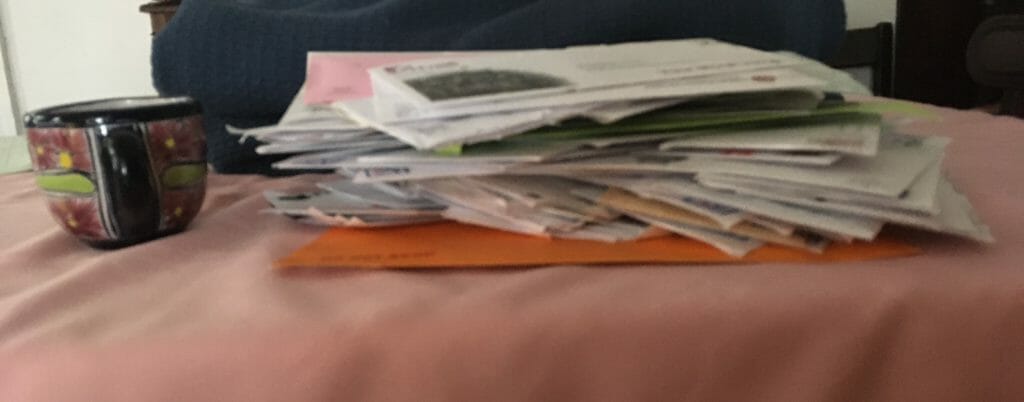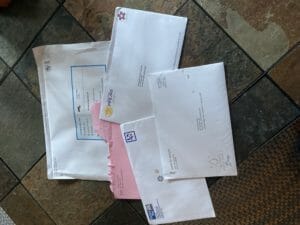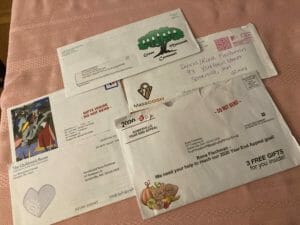When you meet someone you’d like to date, you ask for their phone number. When you meet someone you’d like to see become a donor to your nonprofit, you ask for their mailing address.
That’s right, post office mail. U.S. mail. Fondly referred to as “snail mail.” Because it works.
Across all age groups, direct mail fundraising appeals work better than email appeals, and far better than asking for money on social media. Even when a donor goes to your website and gives online, she is more likely to give because she’s already seen your letter in the mail.
The question is, why should she trust you with her address, any more than she’d trust you with her phone number? The answer is, because you have given her a reason to.
Give to Get the Mailing Address of a Donor or Prospect
What can your organization give your actual or potential donor that has to go through the mail?
Example 1: Something timely to read.
 HIAS is an international agency whose slogan is “Welcome the stranger. Protect the refugee.” Although it helps and gets help from people of every background, it was founded a hundred years ago to aid Jewish immigrants, and a significant number of its donors are still Jewish.
HIAS is an international agency whose slogan is “Welcome the stranger. Protect the refugee.” Although it helps and gets help from people of every background, it was founded a hundred years ago to aid Jewish immigrants, and a significant number of its donors are still Jewish.
So, I was impressed when, the week before Passover, I got a card in the mail containing this special reading that I could add to my Passover seder:
We extend our hands in welcome to those who continue to seek asylum in our country, and we remember the danger of what happens when ordinary people do not stand up to those in seats of power. Now, we join hands to recognize that the work of welcome is the work of each of us and all of us and that we are strongest together.
Granted, I was already on their mailing list, so the card was more of a thank-you gift than a “give to get.” But if this were the first mailing they’d ever sent to me, it would make me happy. I would tuck the card away to use at my family’s seder–so much nicer than having to look it up on my phone!
And if they had emailed me and said, “We have this beautiful reading with a colorful illustration that you can use to make your holiday more special, and we’ll mail it to you–just fill in your street address here”? Yes, I probably would have. And then HIAS would have been able to send more communications, and appeals, to my home, through the mail.
Example 2: Something symbolic to wear.
Change Comes Now works to support women imprisoned in Florida. During the depths of the pandemic, they were the only group making sure that women inside prison walls had face masks to wear.
Providing those masks was an act of real solidarity. For people on the outside, Change Comes Now figured out a way they could show solidarity symbolically–and a way they could share their mailing addresses with the organization.
Change Comes Now created rubber wrist bands, marked with the name of a women’s prison in Florida: “Gadsden,” “Lowell,” “Homestead.” On Facebook, CCN offered its followers the chance to get one of these symbols of solidarity through the mail. For a couple of bucks to defray the cost of postage, a family member, a formerly incarcerated woman, or simply someone who believes the prison system is inhumane could receive a wrist band through the mail.
CCN received their mailing address. By entering those addresses into its database, it made it possible to mail them newsletters and, eventually, fundraising appeals.
What can your nonprofit offer that will make people who follow you online (or get your messages in their email inbox) agree to share their mailing address?




